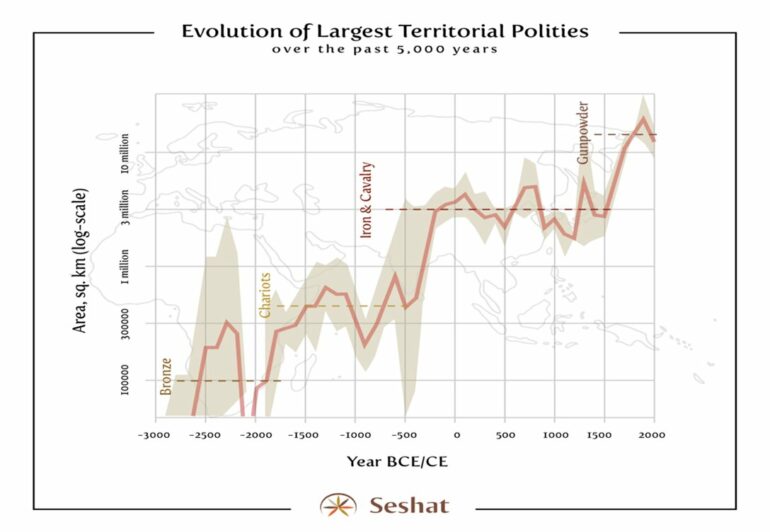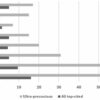During the past 10,000 years—the Holocene—human societies became larger and ever more complex. An international team of scientists led by Peter Turchin from the Complexity Science Hub Vienna (CSH) set out to test various theories on what drove this process. According to its analyses of data from Seshat: Global History Databank, the best explanation for the evolution of socio-cultural complexity is a combination of increasing agricultural productivity and the invention, or adoption, of military technologies (most notably, the invention of iron weapons and cavalry in the first millennium BCE). The study just appeared in the journal Science Advances.
Many theories need to be tested
“Countless explanations have been offered over the years to explain the incredible ‘Holocene transformation,'” Peter Turchin points out. Some theorists, like Jared Diamond, say that the transition to agriculture was both the necessary and sufficient condition for the rise of complex societies. Other theories focus on conflict theories, class struggle, the threat from external warfare or functionalist explanations, e.g., that complex social organization evolved to solve certain problems faced by societies.
“All these theories could cite historical examples seemingly supporting their putative mechanisms; but none have ever proven decisively more convincing than the others,” says Turchin, who leads a team investigating Social Complexity and Collapse at the CSH. Along with fellow members of the Seshat: Global History Databank project, he applied the tried-and-true scientific method: determine what each body of theory proposes as the key factors driving the rise of complexity and see which one best explains the available empirical evidence. The results reveal that many long-standing and influential theories receive little support from data.
Plow and sword drive human history
The best explanation for the observed patterns offers the framework of cultural evolution. “Essentially, the conflict between groups over territory and resources put a tremendous selective pressure on societies,” Turchin explains. It favored societies that were ever larger, more populous, could store more information and communicate effectively at greater distances and were capable of mobilizing larger numbers of people for common projects like defense and maintaining public infrastructure. “While previous theories contained some of these elements, for the first time a single, coherent framework has been provided and demonstrated with the historical record,” says Turchin.
The scholars also identified several major “transformations” during the Holocene: Following the invention of key technologies like bronze and later iron smelting or cavalry warfare and associated tactics, the scale of the largest societies rose dramatically before leveling off to a relatively stable size. New innovations and cultural adaptations continued to build until another breakthrough was achieved, propelling societies to new heights before stabilizing again, while the whole process began anew.
Big Data reveal decisive patterns
“This paper is the culmination of more than a decade of intensive collaboration,” says Harvey Whitehouse, corresponding author on the paper and one of the founding directors of Seshat. “Our study utilized more than a hundred variables—meticulously coded—relating to 373 societies that flourished between 9600 BCE and 1900 CE. With the help of such ‘big’ data we are able to place theories of world history head-to-head and see which ones win.”
The scientists view this study as a breakthrough in the understanding of how human societies have evolved since the very first farmers settled down thousands of years ago. In the future, the team will adopt similar methods to test the diverse group of ideas that have been proposed in other areas of research, such as the causes of societal collapse or the role of religious ideology in cultural evolution.
The ultimate goal, as Turchin puts it, is to “put those influential ideas that do not bear out against the empirical record to bed, once and for all.”
More information:
Peter Turchin et al, Disentangling the Evolutionary Drivers of Social Complexity: A Comprehensive Test of Hypotheses, Science Advances (2022). DOI: 10.1126/sciadv.abn3517. www.science.org/doi/10.1126/sciadv.abn3517
Provided by
Complexity Science Hub Vienna
Citation:
Theories on socio-political evolution put to the test (2022, June 24)



